The Role of Police in Community Safety & Unity
Did you know that close to 90% of Canadians believe that the police play a significant role in maintaining community safety and unity?
Law enforcement and community relations have a profound impact on society, influencing trust, crime prevention, and overall community well-being. The role of the police goes beyond enforcing laws; it extends to building strong relationships with community members and fostering a sense of unity and security.
Key Takeaways
- Police are crucial in maintaining community safety, addressing immediate concerns, and preventing crime.
- Community policing is a partnership between the police and citizens, leading to better crime detection and prevention.
- Building trust and confidence is essential for effective law enforcement, requiring mutual respect and open communication.
- Community involvement and collaborative problem-solving strengthen community policing efforts.
- The strong relationship between the community and law enforcement enhances public safety during crises.
Importance of Community Policing
Community policing is a crucial approach that plays a vital role in maintaining community safety. By fostering a partnership between the police and citizens, community policing addresses local issues and prevents crime. This proactive strategy involves officers actively engaging with community members to build trust, enhance police support, and establish positive relationships.
Through community policing, the police can gain valuable insights from the community regarding crime prevention and detection. Community members who trust and support the police are more likely to report suspicious activities, provide helpful information, and cooperate with law enforcement efforts. This collaboration leads to heightened crime prevention and improved crime detection rates.
The Benefits of Community Policing
Community policing offers numerous benefits that contribute to safer neighborhoods and stronger police-community relations. Firstly, it promotes mutual understanding and respect between the police and community members. By engaging in open dialogue and actively listening to community concerns, officers can better serve the specific needs and priorities of the community.
Moreover, community policing fosters a sense of ownership and shared responsibility for maintaining safety. When community members actively participate in crime prevention initiatives and collaborate with the police, they become proactive partners in creating a secure environment. This approach empowers communities and enhances the overall quality of life.
Community policing also increases police visibility and accessibility, allowing officers to address issues promptly. By being present and engaged within the community, officers can establish relationships built on trust, which are essential for effective crime prevention and community safety.
Overall, community policing not only improves crime prevention and detection but also strengthens police-community relations and fosters a sense of unity. By working together, the police and the community can create safer environments, build trust, and ensure the well-being of all community members.
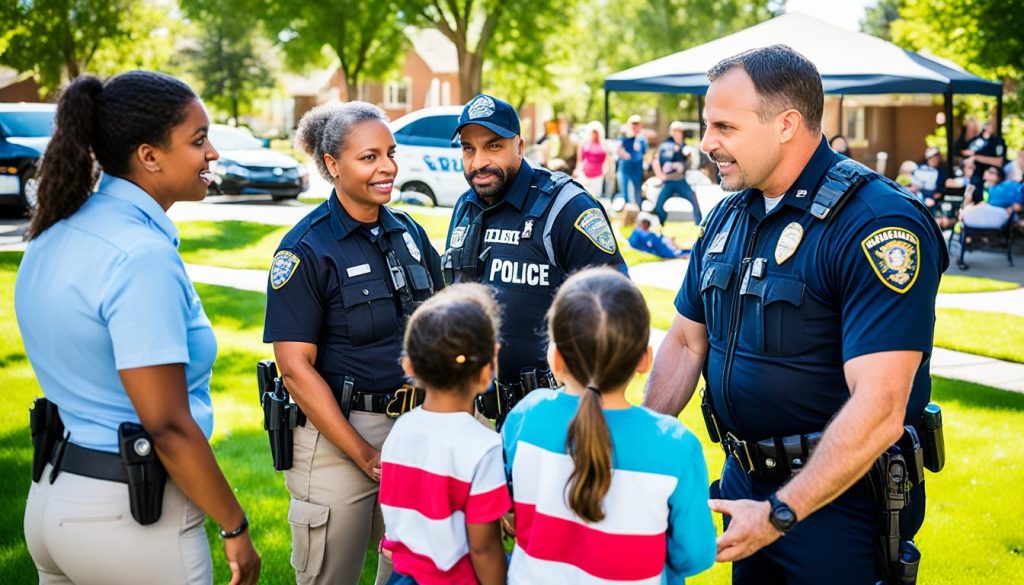
| Benefits of Community Policing | Impact |
|---|---|
| Crime Prevention | Reduces crime rates by involving community members in proactive initiatives |
| Trust and Support | Builds trust and enhances support for the police, leading to increased cooperation |
| Effective Communication | Improves communication between the police and the community, facilitating a collaborative approach |
| Problem Solving | Promotes collaborative problem-solving to address local issues and reduce crime |
| Positive Police Image | Fosters a positive perception of law enforcement through engagement and community outreach |
Building Trust and Confidence
Building trust and confidence between the police and the community is crucial for effective law enforcement. When there is trust and confidence, community members feel safe and are more willing to cooperate in maintaining public safety. This section explores the key elements that contribute to trust-building and the initiatives that strengthen the police-community relationship.
The Importance of Mutual Respect
Mutual respect forms the foundation of trust between the police and the community. It involves recognizing the rights, dignity, and perspectives of all individuals. To establish mutual respect, law enforcement officers should treat community members with fairness and impartiality. Engaging in active listening and valuing diverse opinions helps bridge gaps and fosters understanding. By respecting one another, the police and the community can build a relationship based on trust and equality.
Open Communication and Positive Interactions
Open communication is key to building trust between the police and the community. Transparent and honest dialogue allows for a better understanding of community needs and concerns. Regular town hall meetings, community forums, and constructive conversations help bridge any gaps and foster meaningful connections. Positive interactions, such as officers engaging with community members in non-enforcement contexts, contribute to the development of trust and a sense of partnership.
Trust-Building Initiatives
To strengthen the police-community relationship, trust-building initiatives play a vital role. These initiatives focus on increasing transparency, demonstrating accountability, and promoting positive engagement. Maintaining accurate records of police misconduct, ensuring thorough investigations, and sharing body camera footage when appropriate are examples of transparency initiatives that can help build trust. In addition, community outreach programs, collaborative problem-solving, and partnerships with local organizations can also contribute to fostering mutual respect and trust.
| Trust-Building Initiatives | Description |
|---|---|
| Community Policing Programs | Implementing community policing programs that involve officers working closely with community members to address local issues and concerns. |
| Training Programs | Providing training to law enforcement officers on cultural diversity, implicit bias, and effective communication to foster better understanding and empathy. |
| Citizen Advisory Boards | Establishing citizen advisory boards that allow community members to provide input and collaborate with the police in decision-making processes. |
| Accountability Measures | Implementing accountability measures such as external oversight committees and independent investigations to address misconduct and ensure transparency. |
| Community Engagement Events | Organizing community engagement events, such as neighborhood BBQs, sports tournaments, or volunteer activities, to foster positive interactions and strengthen relationships. |
By implementing these trust-building initiatives and fostering positive relationships, law enforcement agencies can create a safer and more unified community where both the police and community members work together to ensure public safety.
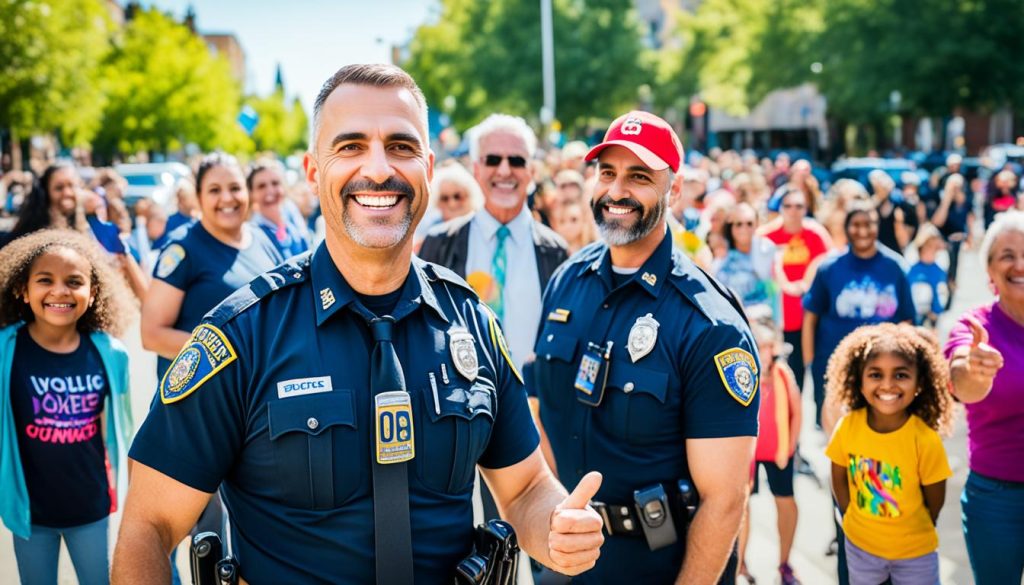
Strengthening Community Policing
Community policing is a proactive approach that goes beyond traditional law enforcement. It actively involves community members in identifying and addressing issues that contribute to crime. This collaborative problem-solving approach strengthens the police-community relationship and empowers communities to take ownership of their safety.
By working together, community members and the police can implement targeted crime prevention strategies tailored to the specific needs of the neighborhood. Through community involvement and partnerships, we can create a safer and more secure environment for everyone.
Proactive policing plays a significant role in community safety. Rather than solely reacting to crime after it occurs, proactive policing focuses on preventing crime before it happens. This approach involves using data analysis, community input, and proactive strategies to identify potential crime hotspots and address underlying factors contributing to criminal activity.
Collaborative problem-solving is at the heart of community policing. By engaging with community members and taking their input into account, the police can gain a deeper understanding of the specific challenges and concerns faced by the community. This collaborative approach allows for the development of sustainable solutions that address the root causes of crime and enhance community safety.
Community partnerships are essential for effective community policing. By building strong relationships with community organizations, businesses, schools, and other stakeholders, the police can leverage additional resources and support. These partnerships enable the implementation of comprehensive crime prevention strategies and enhance the overall well-being of the community.
| Benefit | Description |
|---|---|
| Enhanced Trust and Cooperation | Community members are more likely to trust and cooperate with the police when they are actively involved in decision-making processes and problem-solving efforts. |
| Increased Crime Prevention | By focusing on proactive policing and collaborative problem-solving, community policing strategies help prevent crime and create a safer environment for all. |
| Improved Police-Community Relations | Engaging with community members on a regular basis fosters positive relationships, dispels mistrust, and promotes mutual respect between the police and the community. |
| Targeted Solutions | The active involvement of community members ensures that crime prevention strategies address the specific needs and concerns of the community. |
Enhancing Public Safety during Crisis
During times of crisis or emergencies, the strength of the relationship between the community and law enforcement becomes vital. Effective communication and coordinated efforts between the two are essential for maintaining public safety. By working together in a unified response, the community and the police can swiftly and efficiently address the challenges posed by natural disasters, civil unrest, or terrorist threats, minimizing chaos and ensuring the safety of all individuals.
When a crisis occurs, the community’s response is crucial. By mobilizing resources, sharing information, and supporting one another, a coordinated effort can be achieved. Local authorities and law enforcement agencies play a pivotal role in providing guidance and reassurance to the community, helping to minimize panic and fear. Effective communication channels, such as emergency hotlines, social media updates, and community meetings, enable timely dissemination of information and facilitate cooperation between the community and law enforcement.
During crisis situations, public safety is the primary concern. Law enforcement agencies have trained personnel and resources dedicated to emergency response planning and crisis management. By leveraging their expertise in these areas, law enforcement can provide invaluable support in coordinating evacuations, maintaining order, and ensuring the safety of vulnerable populations.
Emergency Response Table
| Key Elements | Role of Law Enforcement | Role of Community |
|---|---|---|
| Emergency Preparedness | Developing and implementing emergency response plans | Participating in emergency drills and training programs |
| Communication and Information Sharing | Disseminating critical information to the community | Reporting suspicious activities or potential threats |
| Evacuation and Rescue | Coordinating evacuations and ensuring public safety | Following instructions from authorities and assisting others in need |
| Maintaining Order | Enforcing curfews and securing affected areas | Complying with orders for the safety and well-being of all |
| Recovery and Support | Assisting in the recovery process and providing support to affected individuals | Engaging in community-led support initiatives and volunteer efforts |
Fostering a Positive Image of Law Enforcement
Positive police-community relations play a crucial role in shaping the public perception of law enforcement. Building trust and restoring faith in the police is essential for a harmonious society. One of the most effective ways to achieve this is through community engagement.
By actively participating in community events and outreach programs, law enforcement officers demonstrate their dedication to protecting and serving all citizens. These interactions provide opportunities for positive engagement, where community members can see the officers as approachable and caring individuals, rather than distant enforces of the law.
Repairing the image of law enforcement requires consistent efforts to rebuild trust and bridge the gap between communities and the police force. Actively engaging with the community helps to dispel negative stereotypes and assumptions, creating a more accurate perception of law enforcement’s role in society. Through ongoing community engagement, we can collectively work towards stronger, more positive police-community relations.
- The Role of Police in Community Safety & Unity - October 6, 2025
- Quebec Police Officer Salary Insights 2023 - July 13, 2025
- Canada Arrest Protocol: What Police Say Upon Arrest - June 12, 2025
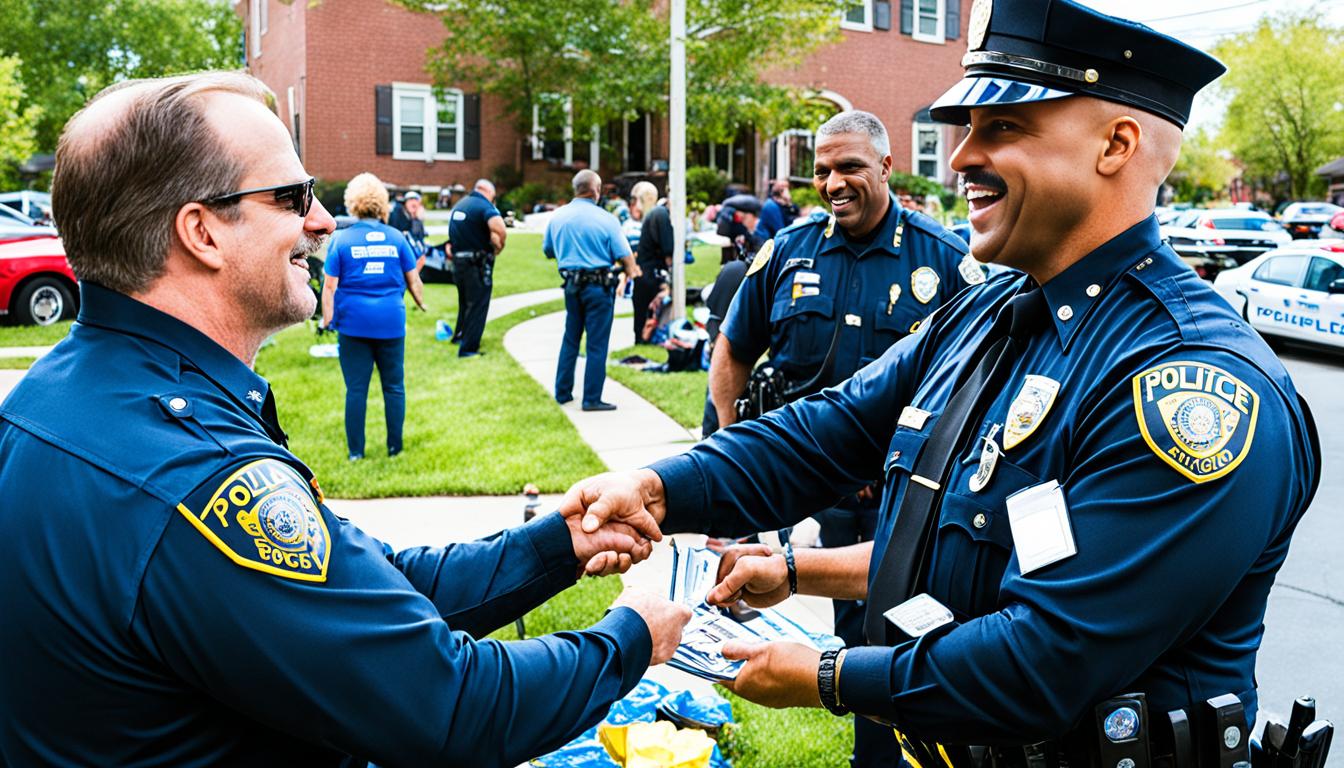
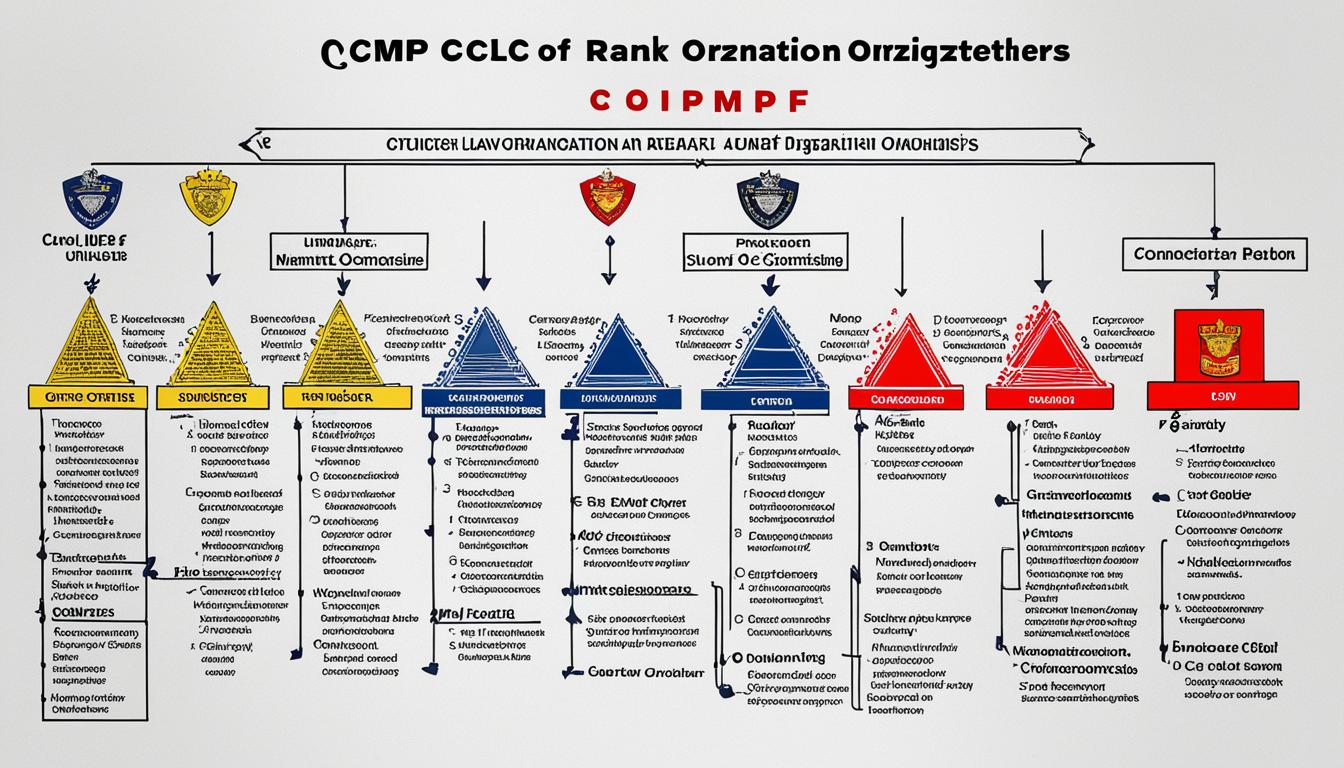
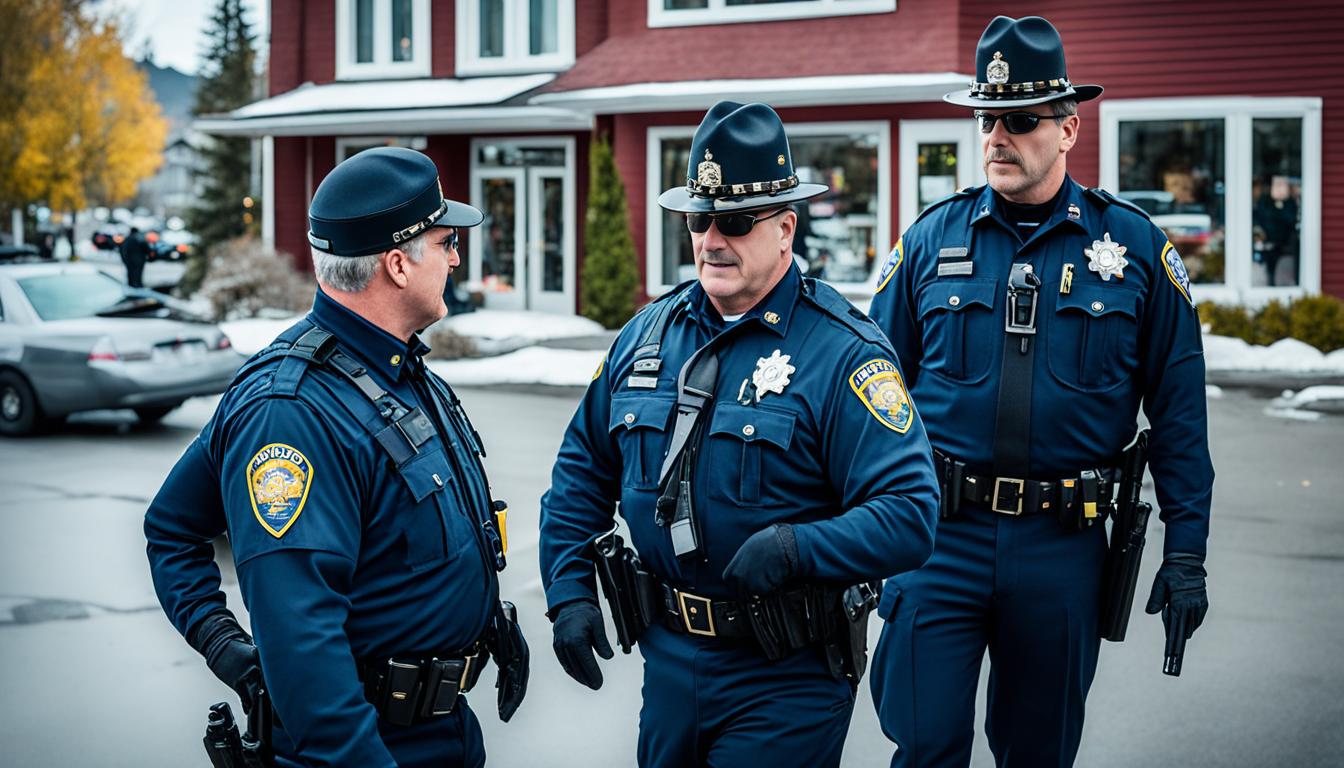

















Post Comment